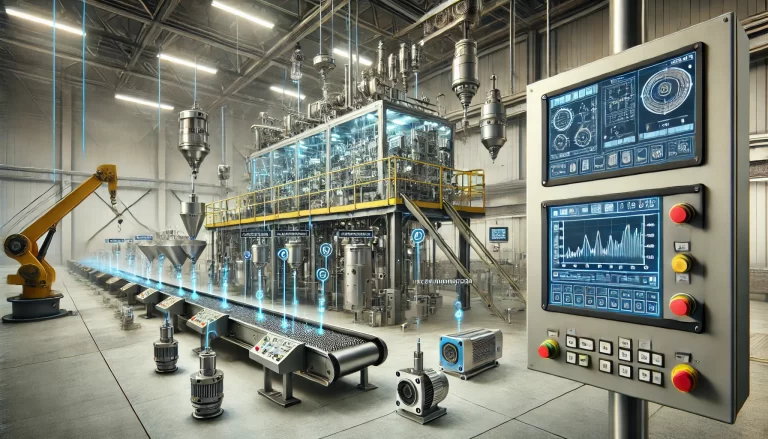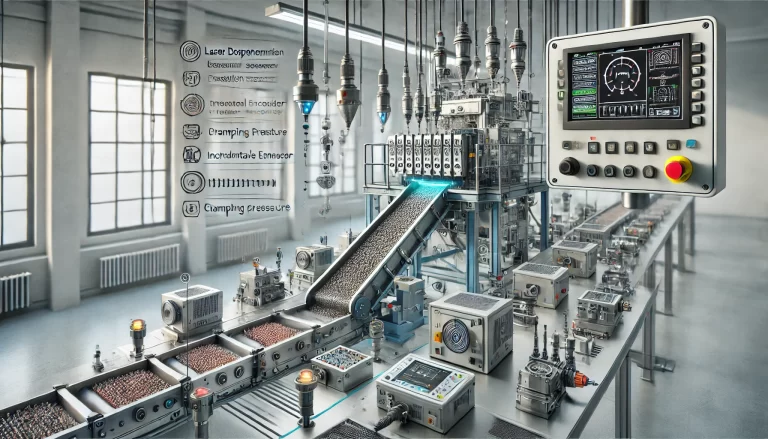Feeders are indispensable in industrial automation, where their performance directly affects the efficiency and quality of production processes. Accurate instrument selection is critical to ensuring precise feeding, system stability, safety, and effective monitoring. This article provides an in-depth exploration of feeder operations, key instrumentation needs, common instrument types with pros and cons, and practical selection guidelines to help engineers make informed decisions.
1. Understanding Feeder Operation and Instrumentation Needs
The primary function of a feeder is to transfer raw materials or workpieces to the processing station at controlled speeds, positions, and pressures. Feeders are commonly used in industries such as stamping, welding, assembly, and injection molding.
Core Process Steps in Feeder Operation:
Material Positioning and Detection: Ensures that raw materials are in the correct starting position.
Feeding Drive Control: Controls speed and step length based on set parameters to ensure accurate feeding.
Condition Monitoring and Feedback: Real-time monitoring to prevent faults and anomalies.
Level Monitoring: For continuous feeding, monitors material levels to prevent production stoppages due to shortages.
Instrumentation Requirements:
To support these operations, feeders require instruments with:
High-precision position detection (e.g., displacement sensors)
Stable speed control (e.g., encoders, frequency converters)
Pressure or tension monitoring (e.g., pressure or tension sensors)
Level or liquid level monitoring (e.g., vibrating rod or tuning fork switches)
Data acquisition and remote monitoring (e.g., industrial control instruments, PLC modules)

2. Common Instrument Types, Features, and Pros & Cons
(1) Position Detection Instruments
Ensure accurate step control to minimize feeding errors.
Photoelectric Sensors (Light curtains, laser displacement sensors): Non-contact detection with high precision but susceptible to dust and ambient light interference.
Proximity Sensors (Inductive, magnetic types): Ideal for detecting metal materials but less effective with non-metallic items.
Linear Displacement Sensors (LVDTs, encoders): High precision, suitable for demanding applications but with higher costs.
Case Example:
In a high-precision stamping process, incorrect positioning led to production delays. Upgrading from basic photoelectric sensors to laser displacement sensors reduced errors and improved throughput by 20%.
(2) Speed Control Instruments
Maintain consistent feeding rates in both continuous and step-based operations.
Incremental Encoders: High-precision real-time speed measurement, ideal for closed-loop control systems.
Frequency Converters with Feedback Control: Adjustable speeds, though response times can be slower.
Servo Drive Systems: High precision and fast response, often used in advanced feeder systems but at a higher cost.
(3) Pressure and Tension Monitoring Instruments
Prevent material overload or slippage to ensure stability.
Pressure Sensors: Monitor clamping pressure to prevent over-tightening or loosening.
Tension Sensors (Load cells): Maintain constant tension in roll feeding to avoid material deformation.
(4) Level and Liquid Level Monitoring Instruments
Ensure sufficient material or liquid levels to prevent production stoppages.
RF Admittance Level Switches: Suitable for monitoring powders and granular materials, capable of withstanding high temperatures up to 450°C.
Radar Level Meters: Ideal for high-temperature, high-pressure, or dusty environments with high accuracy and non-contact measurement.
Tuning Fork Level Switches: Quick response for powders and granules but sensitive to changes in dielectric constants.
Float Level Gauges: Reliable for stable liquid monitoring environments.
(5) Data Acquisition and Remote Monitoring Instruments
Enhance control and monitoring through automation.
Industrial Touch Screens and HMIs: Enable real-time parameter adjustments and improve user experience.
PLC Data Acquisition Modules: Integrate multiple sensor signals to enhance automation.
Wireless Monitoring Systems (IoT Sensors): Allow remote monitoring and predictive maintenance in smart factories.
3. Principles for Instrument Selection
1. Match Instrumentation to Feeder and Process Requirements
For roll feeding, combine tension sensors, encoders, and frequency converters.
For high-precision applications, opt for LVDTs and servo drive systems.
For powder or granular feeding, prioritize vibrating rod or tuning fork level switches.
For liquid feeding, prioritize radar or tuning fork level meters.
2. Ensure Signal Compatibility and System Integration
Choose instruments supporting standard protocols such as Modbus, Profibus, or Ethernet/IP to facilitate integration with PLC and SCADA systems.
Ensure sensor signals (e.g., 4-20mA, 0-10V, RS485) match the control system’s input requirements.
3. Focus on Maintenance and Long-Term Stability
Select instruments with low drift and minimal calibration needs to reduce maintenance costs.
For critical instruments (e.g., pressure and level sensors), consider models with self-diagnostic functions.
Case Example:
A food processing plant experienced frequent interruptions due to level sensor failures. After switching to radar level meters with automated diagnostics, downtime was reduced by 30%.

4. Conclusion
Instrument selection for feeders significantly impacts precision, efficiency, and stability. Engineers must carefully evaluate process requirements, control needs, and environmental conditions to choose the right combination of position detection, speed control, pressure monitoring, and level monitoring instruments. The adoption of advanced technologies such as AI-driven predictive maintenance and smart data analysis will further enhance feeder performance, promoting higher productivity and reliability in industrial automation.
